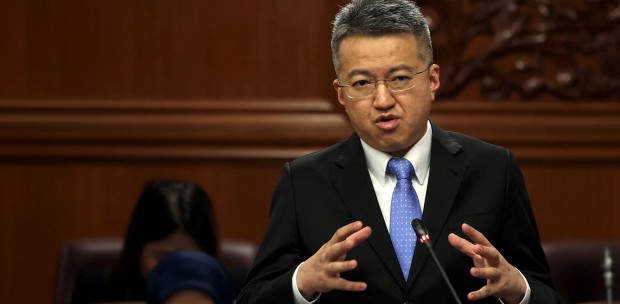FROM June 26 to 30, I attended the 11th World Urban Forum (WUF11) in Katowice, Poland.
The theme "Transforming Our Cities, For A Better Urban Future" was one close to our hearts at Think City, which is committed to making cities more liveable, resilient and sustainable.
Some of the highlights of the event included listening to Datuk Seri Maimunah Mohd Sharif — an inspiring Malaysian woman who rose from a local town planner to the mayor of Penang, and now under-secretary-general of the United Nations and executive director of the UN Human Settlements Programme (UN-Habitat).
Maimunah said that in 2020, 93 million people were pushed back into extreme poverty and 161 million suffered from chronic hunger. Inequality has increased everywhere, with higher rates of children missing out on school, drops in reading literacy, and inflation and war in Europe causing more and more people to face homelessness.
She called for a post-pandemic urban development agenda across the world that is more strategic to ensure the people's well-being and health. She stressed that the time to act was now.
The last few decades saw a massive movement of people from rural to urban regions due to the abundance of opportunities in cities. Maimunah said "the future is urban", with two out of three people already living in urban areas.
This has really fuelled us at Think City to think about what sort of immediate solutions and activities can be localised to cater to these growing numbers, while also placing a strong focus on the B40 communities.
By adopting a community-first and evidence-based approach, Think City focuses on urban mechanics, environment and social, strategy and analytics, and culture-based economic development to seek solutions.
Leveraging on these practices, Think City's work is showcased through various city programmes, from climate adaptation nature-based solutions, creative placemaking, conservation, arts and heritage and resilience of communities nationwide and abroad.
I am particularly drawn to culture and creativity, as they have so much potential to deliver social, economic, and spatial benefits for cities and communities.
Culture and creativity also contribute to social harmony at the "taman" or neighbourhood level, enabling networks to form, and creating opportunities for those who are often economically excluded.
I was recently moved by a project by Fundacion Placemaking Mexico and FEMSA Foundation on LAPIS – an initiative that aims to create environments that foster the development of children in their early years and improve their experience in public spaces in the company of their caregivers, through healthy and community participation.
What intrigued me most is their ground up effort that included children and their caretakers in the design and production process, and how it is not so much about making creative places as it is about making places creatively.
This made me think of our continued effort in increasing social equity through placemaking in public spaces. The involvement of artists in reimagining these spaces is critical to reflect the values and visions of the community it serves.
With the right ideas of placemaking, and the right resources of the upcoming Budget 2023, unkept properties and unutilised spaces can be transformed to positive environments for our public housing communities, for users of parks and public spaces, for commuters in transit, and more.
Across sectors and at all levels globally, today's leaders and policymakers are increasingly recognising how creative placemaking initiatives can simultaneously advance their missions in transportation, housing, employment, healthcare, environmental sustainability, and education.
We need to reimagine cities to improve quality of life for all Malaysians. We need to make our cities liveable and loveable for our Keluarga Malaysia, and generations to come. The time to act is now.
The writer is the Senior Director, Partnerships & Creative Sector at Think City





